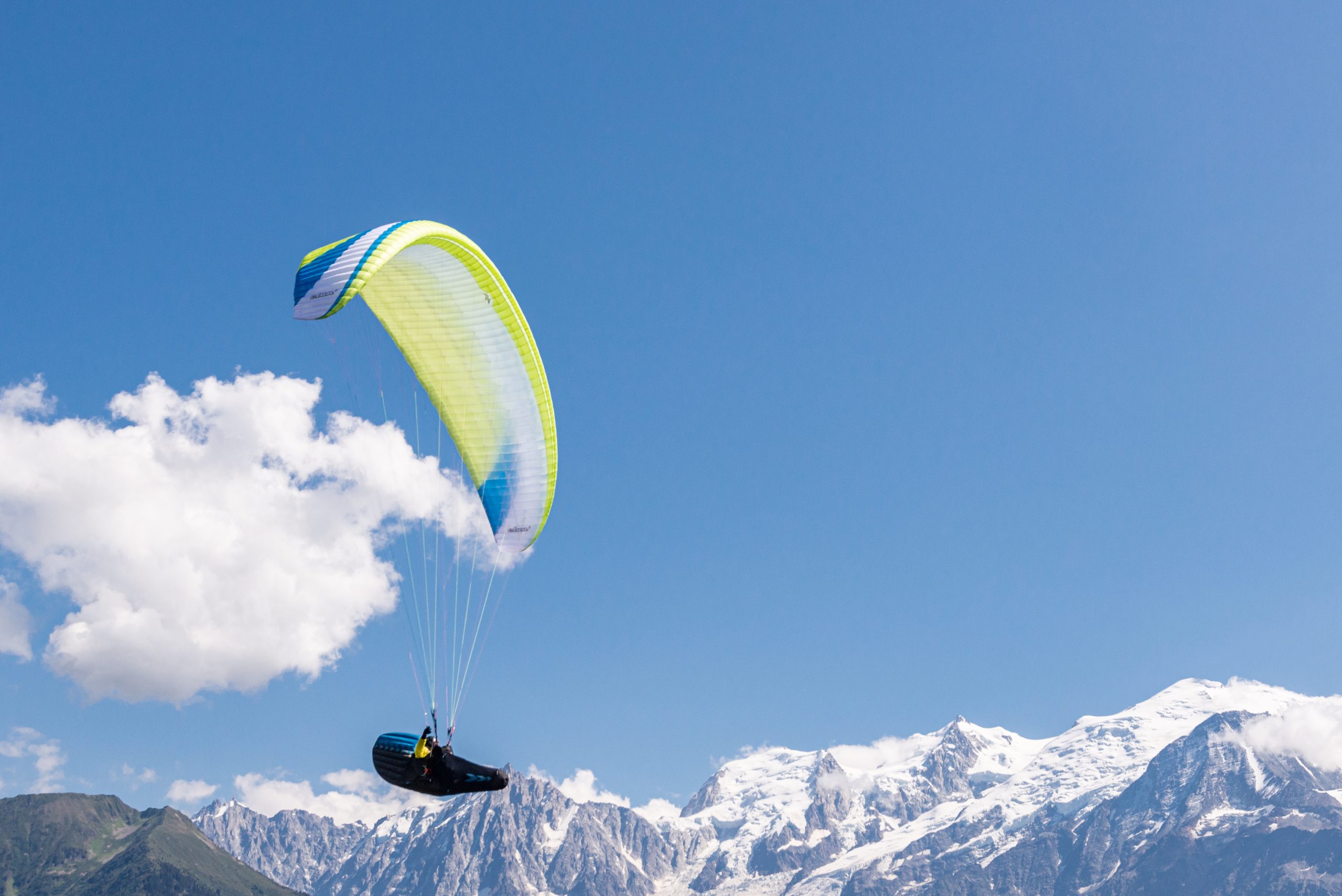
Thinking about ... the steering position
Preferences for harness position vary from person to person, depending on size, body shape, flying habits and sensations. However, it's important to note that the chosen position has a direct impact on piloting performance, particularly as a function of the pilot's experience and skill level. There are two extreme positions:
Seated position: The pilot sits upright in the harness, flying with his back relatively straight, while his legs remain dangling under the seat.
Prone position: The rider lies backwards, on his back, with his legs stretched out in front of him. The legs can be supported by a cocoon or a simple footrest.
Between these two extremes, there are many intermediate positions that can be adjusted to a certain extent by means of harness adjustments.
There are three main reasons that can influence the choice of one flight position over another, and we're going to analyze them. For simplicity's sake, we'll look at each case using the example of a beginner pilot (leaving a paragliding school) and an experienced pilot (taking part in World Cup-level competitions, for example). Depending on your level, you'll be able to adapt this information accordingly.
ROLL SENSITIVITY
The paraglider moves along three axes: pitch, yaw and the most influential on the harness, roll. The roll corresponds to the rocking motion felt in flight, from left to right, resulting from the glider's interaction with the surrounding air. These movements are a source of information for the pilot to feel the air mass and adjust his piloting by using the brakes, the harness, or both.
In mechanics, the moment of inertia represents the "resistance" a body opposes to its motion. In the case of rotation, such as rolling, this resistance is greater the further the masses are from the axis of rotation. In our case, the roll axis lies approximately at the level of the harness anchor points, and passes through the pilot from front to back. Thus, the rolling motion occurs from right to left and vice versa.
When you move from a sitting to a reclined position, the various masses of the human body move closer to this roll axis: the head, the torso and the legs. This reduces inertia and facilitates movement. In other words, it increases the harness's sensitivity to roll. As a result, a seated position will be mechanically more stable than a prone position.
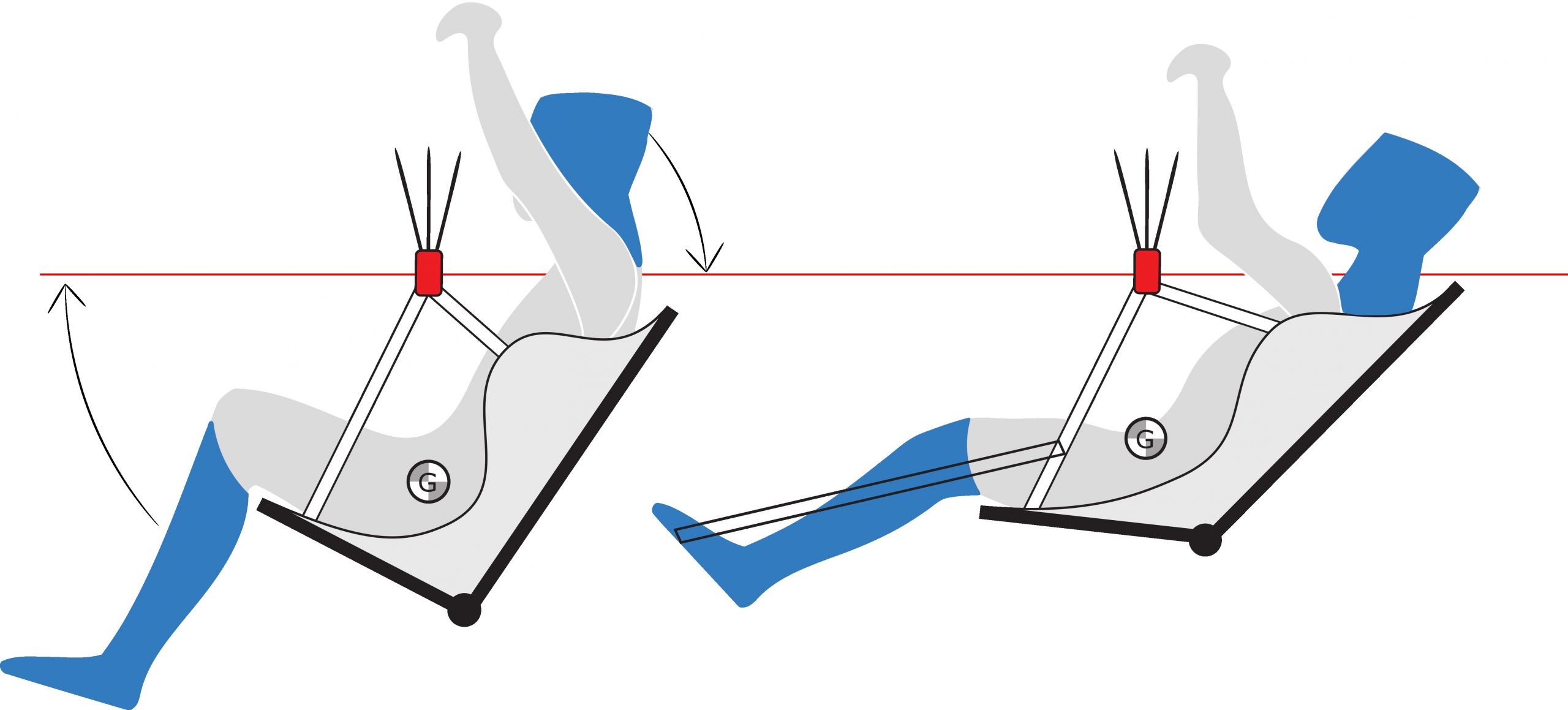
When you're new to paragliding, it's common to be overwhelmed by in-flight information, which can destabilize the novice pilot and prevent him or her from concentrating on essential tasks such as flight planning or landing. In such cases, a sitting position is recommended to stabilize the harness by adopting an appropriate posture. This filters the information coming from the glider and avoids disturbing the pilot.
For an experienced pilot, however, the situation is different. It's important to gather as much information as possible about the air mass, in order to pilot efficiently and precisely. The skills acquired by this type of pilot enable him to focus on this information and use it to maneuver the glider. If conditions become too turbulent, simply straighten up and adopt a more seated position to regain greater stability in the harness.
Similarly, if a beginner pilot simply wants to boost his flying a little, there's no need to change harness or even glider.or even a different glider.. He can gradually adopt a more rear-inclined position and, for example, add a footrest to improve his comfort and position.
FIELD OF VISION
A paraglider enjoys spending time in the air, whether it's for the simple pleasure of flying, or with a performance objective in mind, covering long distances. In this quest for flight optimization, they seek out all available information.
But where can this information be found, and what impact does flight position have? In general, the information is located in front of the pilot, in the direction of travel, and is divided into three levels:
Below: This is where you'll find information such as the cone of flight, nearby terrain, height above ground level, landing fields, windsocks, any obstacles such as power lines or pylons, and other pilots flying downwind (who have priority!).
At the same level: information about pilots flying at the same altitude, more distant terrain and possible obstacles.
Above: This is where you can find information on pilots and other aircraft flying overhead, the presence of birds, the day's ceiling, cloud evolution, and also the characteristics and behavior of your own glider.
So, depending on the flight position, the paraglider pilot can access different sources of information to optimize his trajectory and decision-making during the flight.
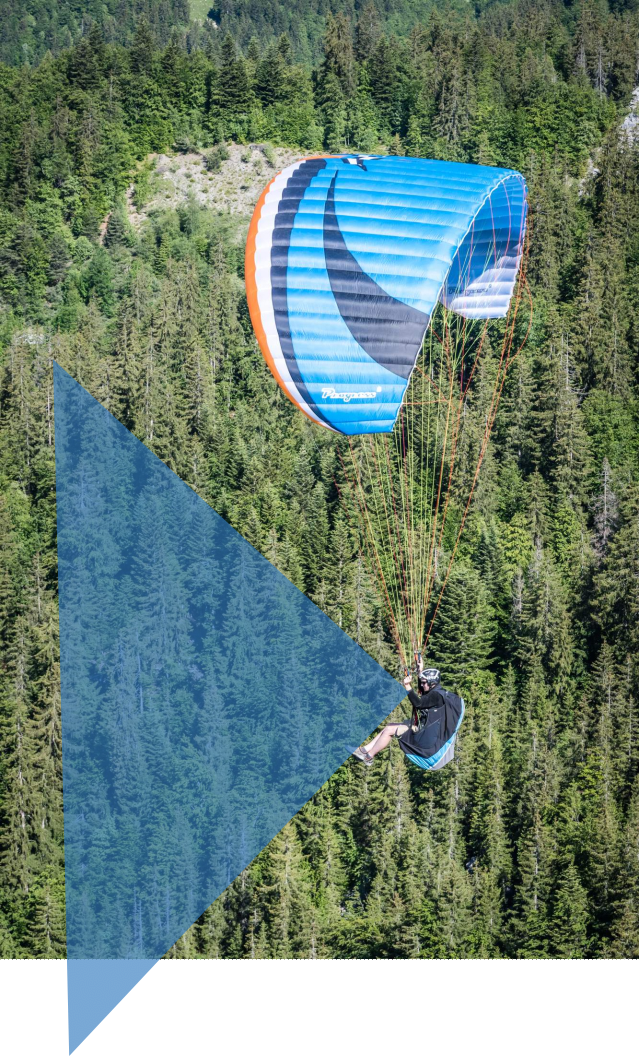
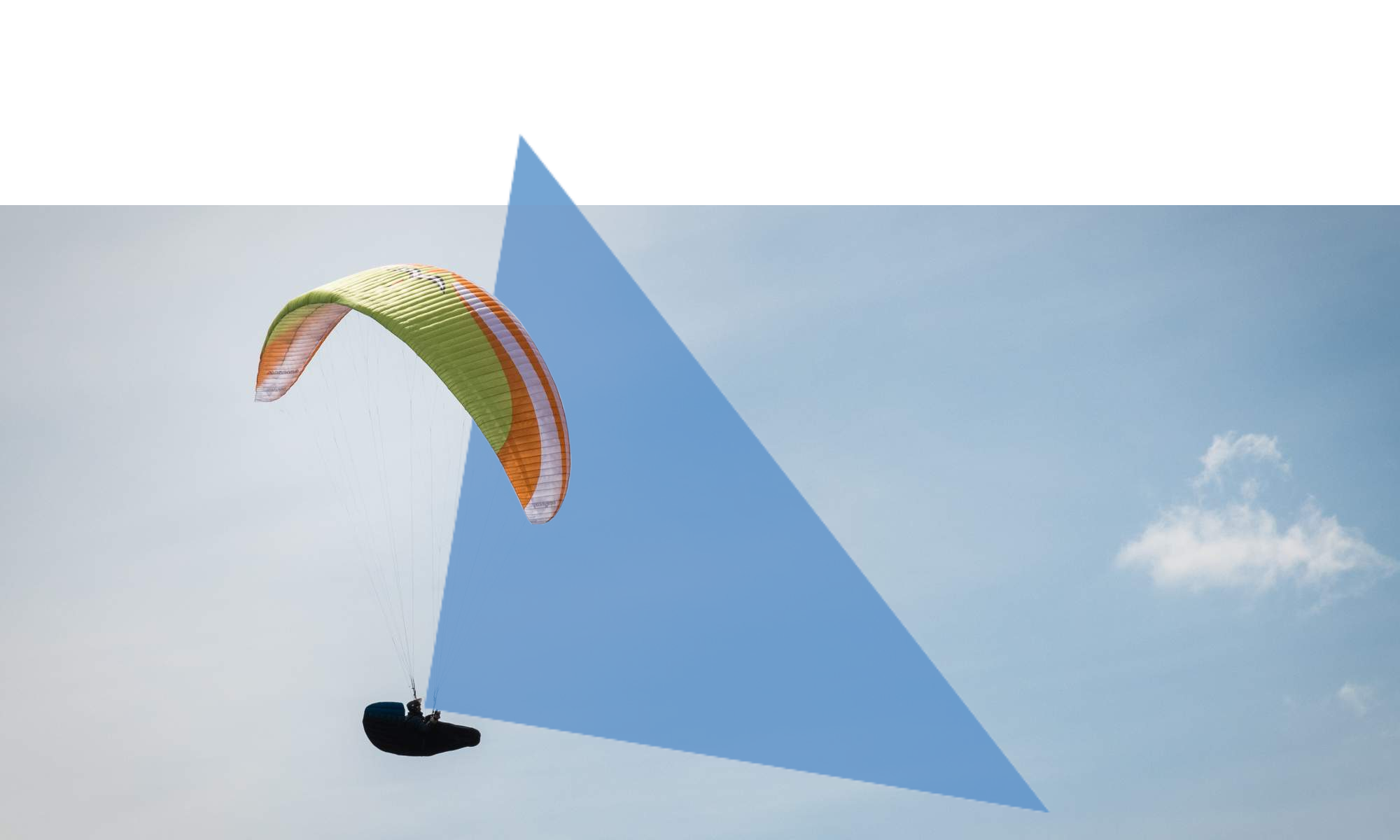
It goes without saying that certain elements can be found at several levels (birds, terrain, obstacles, etc.).
When you're new to paragliding, your main focus is on specific objectives such as achieving a successful take-off, following your flight plan and approaching the landing with confidence. At this stage, there's a lot to consider, and staying in the air as long as possible isn't necessarily the priority. So what information is important during this phase?
- Where's the landing field?
- Am I in my safe development zone?
- How high am I from the ground?
- Where are the obstacles on my flight path?
- Where are the other pilots?
For a beginner, the most important information lies below and in front of you. With this in mind, a seated position in the harness is the most ergonomic, allowing easier access to the necessary information.
As they progress, paraglider pilots tend to extend their flights, exploit thermal lift and explore new landscapes. As he gains altitude, he will need to look up and observe various elements such as the evolution of clouds throughout the day, wind direction and strength, distant valleys and potential lift. What's more, since the glider can behave more dynamically, it's essential to keep a close eye on how it reacts, and adapt your piloting accordingly.
So it's only natural that the pilot will want to lean back to get a clearer view of the information mainly above him. Of course, he'll also need to glance down from time to time, but this will no longer account for the majority of flying time.
COMFORT
The position adopted in the harness has an impact on the level of comfort experienced (see article "Thoughts on ... the comfort of a harness"). A reclined position distributes body weight more evenly throughout the harness structure. For this reason, experienced pilots are gradually moving towards a more extended position for greater comfort, especially on longer flights. For beginner pilots, this aspect is not a priority, as their flights are generally of short duration and other aspects such as stability, information gathering and safety are more important. Moreover, as mentioned above, the seated position is more conducive to finding useful information.
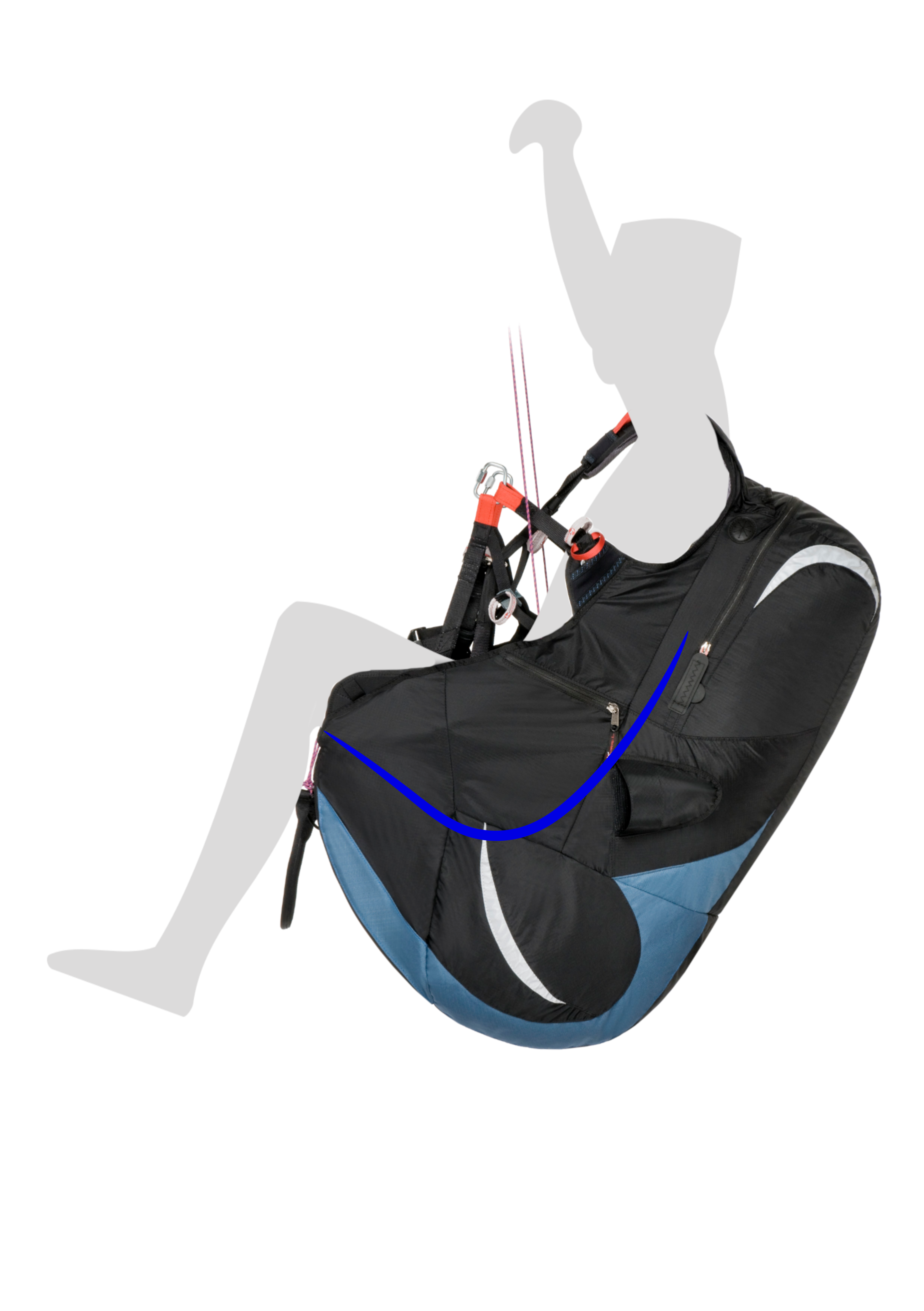
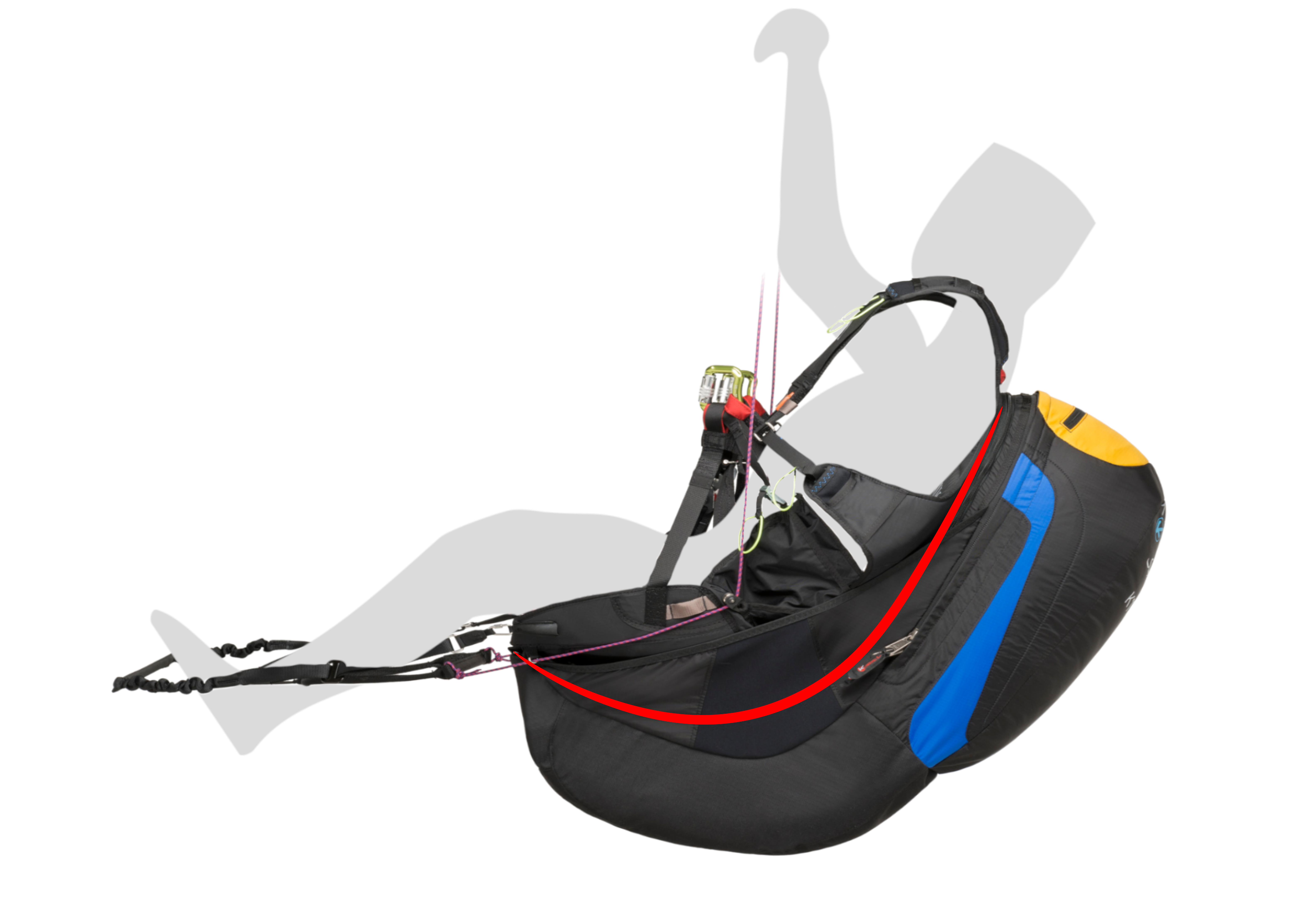
The prone position has the advantage of maintaining the muscle tone needed to withstand flights lasting several hours. The leg support systems integrated into the cocoons, or the use of a footrest, considerably reduce the effort required. However, the legs still need to maintain a certain amount of tone to stay taut. What's more, support in the cocoon also allows you to participate in steering the harness.
In the seated position, on the other hand, the legs hang down and require no particular effort. Over time, however, this position can lead to a sensation of numbness, which can become unpleasant in longer flights.
CONCLUSION
After examining the various aspects of the flying position, it is essential to consider the advantages and disadvantages of each position in relation to your experience level and the type of flight planned. It's vital to strike a balance between personal comfort and the specific requirements of paragliding, in order to enjoy the flying experience to its fullest, while ensuring safety and optimum performance.
